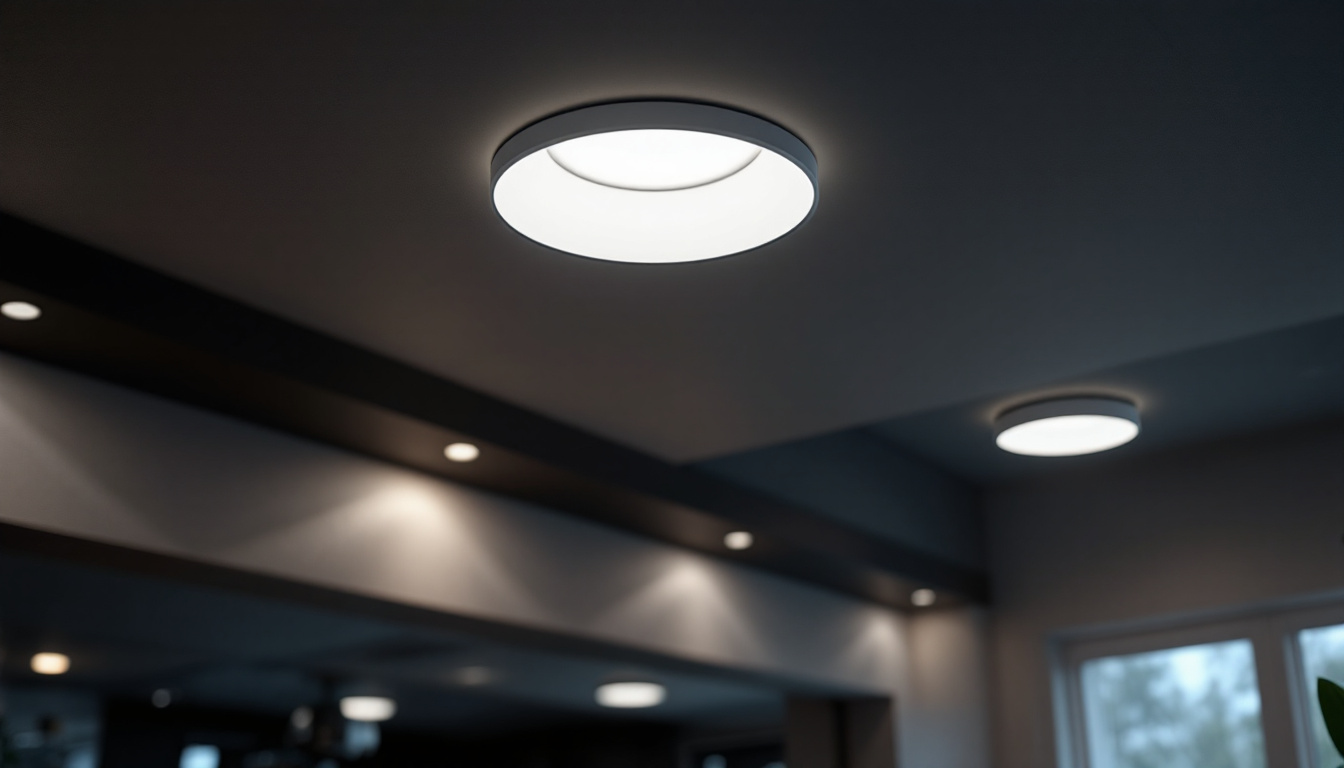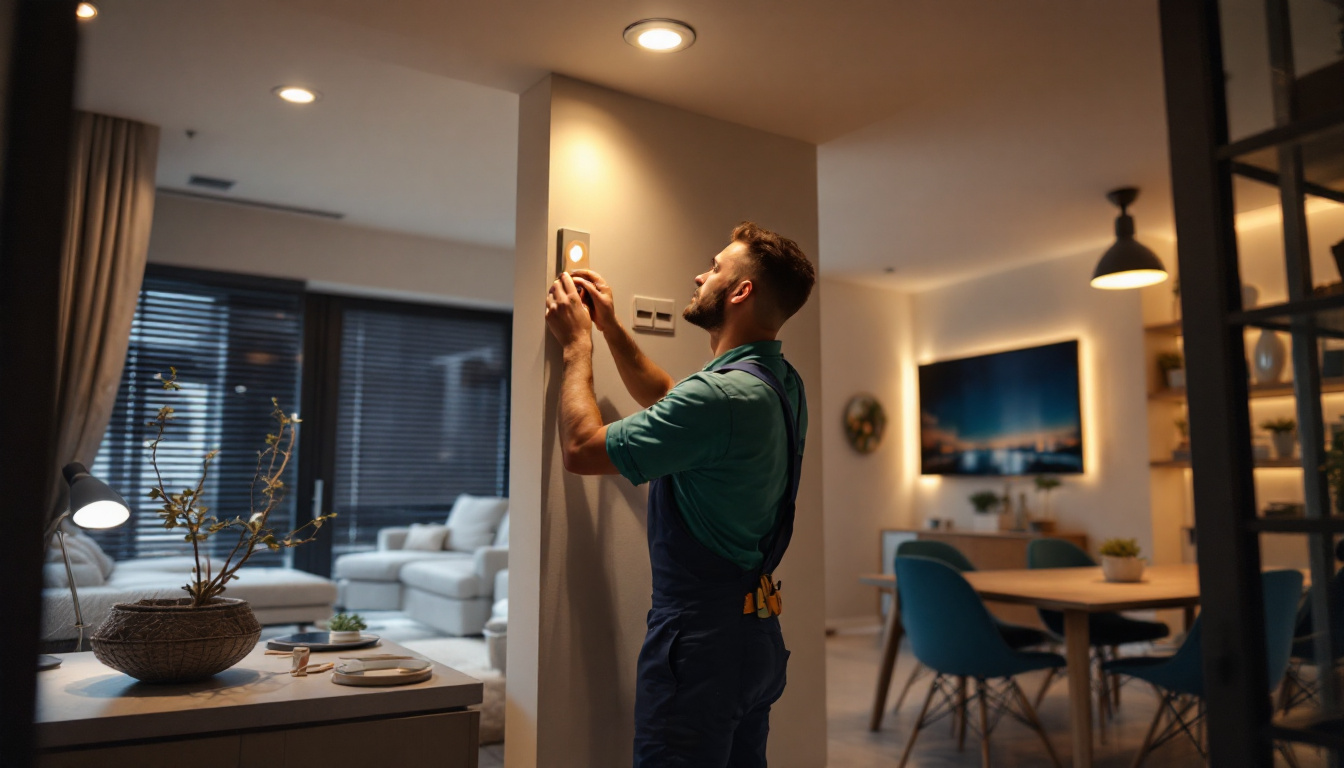
In the world of modern lighting design, small recessed lights have become an essential component for both residential and commercial spaces. These compact fixtures not only provide efficient illumination but also enhance the aesthetic appeal of a room. For lighting contractors, understanding the intricacies of small recessed lights is crucial for delivering quality installations that meet client expectations. This article delves into everything contractors need to know about small recessed lights, from their benefits to installation tips and design considerations.
Small recessed lights, often referred to as can lights or downlights, are fixtures that are installed into the ceiling, providing a sleek and unobtrusive lighting solution. They come in various sizes, styles, and configurations, making them versatile for different applications. Their design allows them to blend seamlessly into the ceiling, providing a clean look while delivering focused light where it is needed most.
There are several types of small recessed lights available on the market, each designed to serve specific purposes. The most common types include:
Understanding the different types of recessed lights helps contractors choose the right fixtures for their projects, ensuring they meet the specific lighting needs of their clients. Additionally, the choice of trim and finish can greatly affect the overall aesthetic of the space. For instance, a baffle trim can help reduce glare, while a reflector trim can enhance brightness, allowing for customization based on the desired ambiance.
Small recessed lights offer numerous advantages that make them a popular choice among contractors and homeowners alike. Some of these benefits include:
These benefits not only enhance the functionality of a space but also contribute to energy savings and overall aesthetic appeal, making small recessed lights a smart choice for contractors. Furthermore, their ability to be integrated with smart home systems allows for advanced control options, such as dimming or color changing, which can significantly enhance the user experience. Homeowners can create different moods for various occasions, from a bright and lively atmosphere during gatherings to a soft and calming ambiance for relaxation.
proper installation of small recessed lights is critical to ensure optimal performance and safety. Lighting contractors must consider various factors during the installation process to achieve the best results.
Before installing recessed lights, it is essential to understand the electrical requirements. Most small recessed lights operate on standard voltage, but some may require specific transformers or drivers, especially if they are LED fixtures. Contractors should verify the voltage requirements and ensure that the existing electrical system can support the new lighting.
Additionally, it is crucial to follow local electrical codes and regulations during installation. This includes ensuring proper wiring practices, using appropriate circuit breakers, and adhering to safety standards. Failure to comply with these regulations can lead to hazards and potential liabilities. Moreover, contractors should consider the load capacity of the circuit to which the recessed lights will be connected. Overloading a circuit can lead to tripped breakers or even electrical fires, making it imperative to calculate the total wattage of all fixtures on the circuit before proceeding.
The placement and spacing of recessed lights significantly impact the overall lighting quality in a room. A common guideline is to space fixtures approximately 4 to 6 feet apart, depending on the height of the ceiling and the desired light intensity. For higher ceilings, fixtures may need to be spaced further apart to achieve even illumination.
Moreover, contractors should consider the purpose of the lighting when determining placement. For instance, in a kitchen, recessed lights should be strategically positioned over work areas, while in a living room, they may be used to create ambient lighting. Proper planning ensures that the lighting design meets the functional and aesthetic needs of the space. It’s also beneficial to use a dimmer switch with recessed lighting, as this allows for greater control over the intensity of the light, enabling homeowners to create the perfect atmosphere for various activities, from cooking to entertaining guests.
When installing small recessed lights, it is essential to consider insulation and airflow. Many recessed fixtures are rated for contact with insulation (IC-rated), while others are not (non-IC rated). Using non-IC rated fixtures in insulated ceilings can pose a fire hazard due to overheating.
Contractors should also ensure that there is adequate airflow around the fixtures to prevent overheating. This may involve cutting holes in the insulation or using special insulation covers designed for recessed lights. Proper insulation and airflow management help maintain the safety and efficiency of the lighting system. Additionally, it is advisable to use LED recessed lights, as they generate significantly less heat compared to traditional incandescent bulbs, further reducing the risk of overheating and improving energy efficiency. This not only enhances safety but also contributes to lower energy bills over time, making LED fixtures a smart choice for modern lighting solutions.
Design plays a crucial role in the effectiveness of small recessed lights. Lighting contractors must consider various design elements to create a cohesive and functional lighting scheme.
Small recessed lights are available in a range of color temperatures, typically measured in Kelvin (K). Warmer tones (2700K to 3000K) create a cozy atmosphere, making them suitable for living spaces, while cooler tones (3500K to 5000K) are ideal for task-oriented areas like kitchens and offices.
Brightness is another important factor, measured in lumens. Contractors should assess the intended use of the space to determine the appropriate brightness level. For example, a reading nook may require brighter lighting than a hallway. Balancing color temperature and brightness ensures that the lighting design enhances the overall ambiance of the space.
The trim style and finish of recessed lights can significantly impact the overall look of a room. Contractors can choose from various trim styles, including baffle, reflector, and adjustable trims, each offering different lighting effects and aesthetics.
Additionally, the finish of the trim—such as white, black, or metallic—can complement or contrast with the surrounding decor. Selecting the right trim style and finish is essential for achieving a polished and cohesive look in the lighting design.
With the rise of smart home technology, integrating small recessed lights into a smart lighting system has become increasingly popular. Contractors should be familiar with smart lighting options, including dimmers, color-changing features, and remote control capabilities.
By offering smart lighting solutions, contractors can enhance the functionality and convenience of their installations, providing clients with greater control over their lighting environment. This integration not only improves user experience but also adds value to the overall lighting design.
Even with proper installation and design, maintenance and troubleshooting are essential aspects of working with small recessed lights. Lighting contractors should be prepared to address common issues that may arise over time.
While LED recessed lights have a long lifespan, they will eventually need replacement. Contractors should educate clients on how to identify when a bulb or fixture needs replacing and provide guidance on the appropriate products to use. Ensuring that clients have access to replacement options can enhance their satisfaction with the installation.
Additionally, it is important to inform clients about the proper disposal of old bulbs and fixtures, particularly if they contain hazardous materials. Providing this information demonstrates professionalism and a commitment to sustainability.
Flickering lights can be a common issue with recessed fixtures, often caused by loose connections, incompatible dimmers, or faulty bulbs. Contractors should be equipped to troubleshoot these problems effectively.
Checking the wiring connections and ensuring compatibility with dimmer switches can often resolve flickering issues. If the problem persists, replacing the bulb or fixture may be necessary. Providing clients with troubleshooting tips can help them address minor issues without needing to call for service.
Small recessed lights are an invaluable tool for lighting contractors, offering versatility, efficiency, and aesthetic appeal. By understanding the various types, installation considerations, design elements, and maintenance requirements, contractors can deliver high-quality lighting solutions that meet the unique needs of their clients. As the demand for innovative lighting design continues to grow, staying informed about small recessed lights will ensure that contractors remain competitive in the ever-evolving lighting industry.
With careful planning and execution, small recessed lights can transform spaces, enhance functionality, and create inviting atmospheres that clients will love. Embracing the potential of these fixtures will not only elevate the quality of installations but also foster lasting relationships with clients who appreciate the value of expert lighting design.
Ready to elevate your lighting projects with the efficiency and aesthetic appeal of small recessed lights? Look no further than LumenWholesale for all your lighting needs. Our spec-grade lighting products are designed to meet the highest industry standards, ensuring you deliver top-notch solutions to your clients. With unbeatable wholesale prices and the convenience of bulk buying without hidden fees, LumenWholesale is your go-to source for quality and affordability. Say goodbye to inflated markups and hello to hassle-free free shipping. Take the next step in innovative lighting design and experience the best value in wholesale lighting today.

Discover innovative strategies and expert insights on outlet receptacles tailored for smart lighting contractors.

Discover how lighting contractors can enhance their business with LED pot lights.

Discover how 4-inch recessed lighting is revolutionizing the lighting industry with its sleek design, energy efficiency, and versatile functionality.

Discover essential information about Type B base light bulbs tailored for lighting contractors.